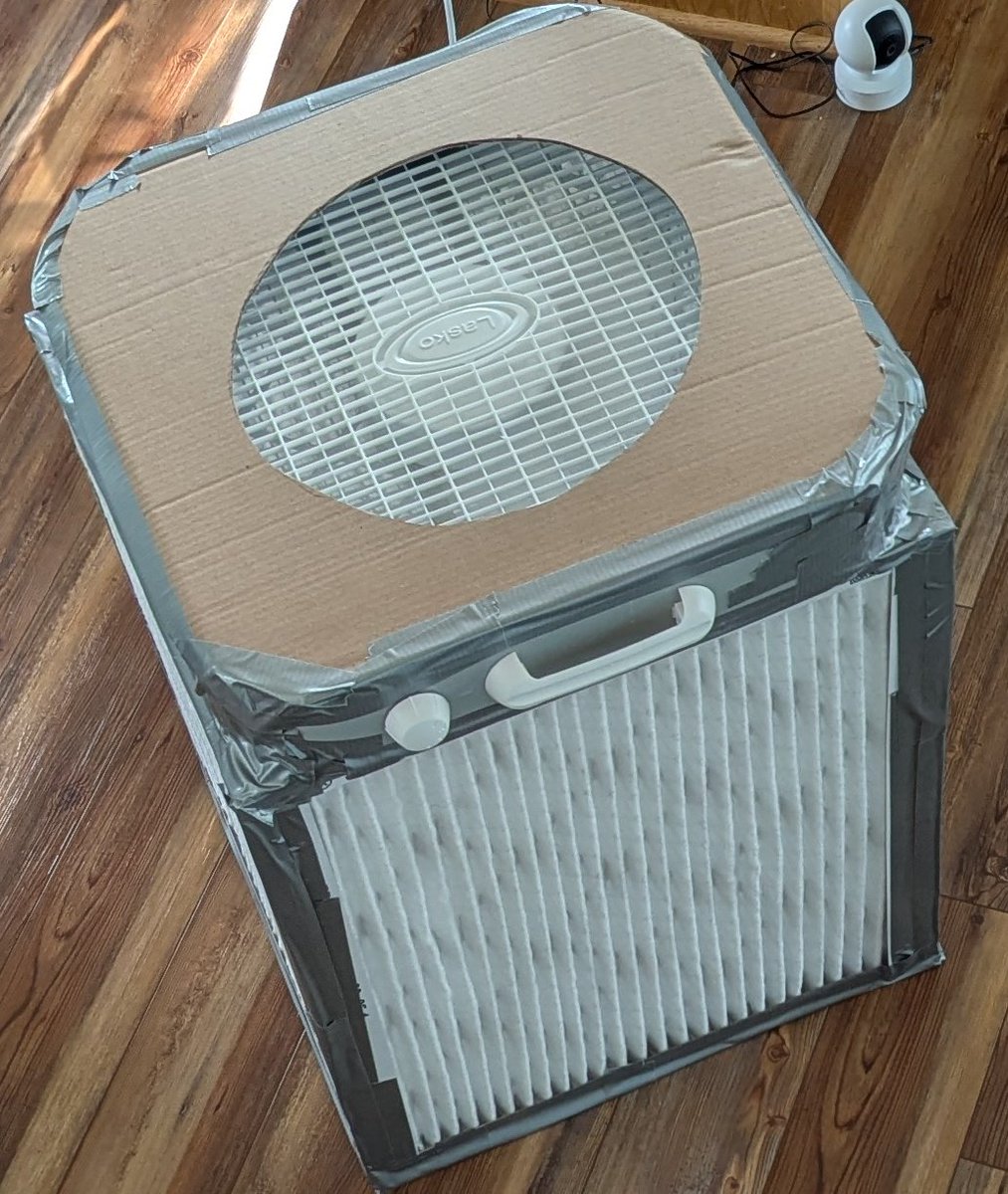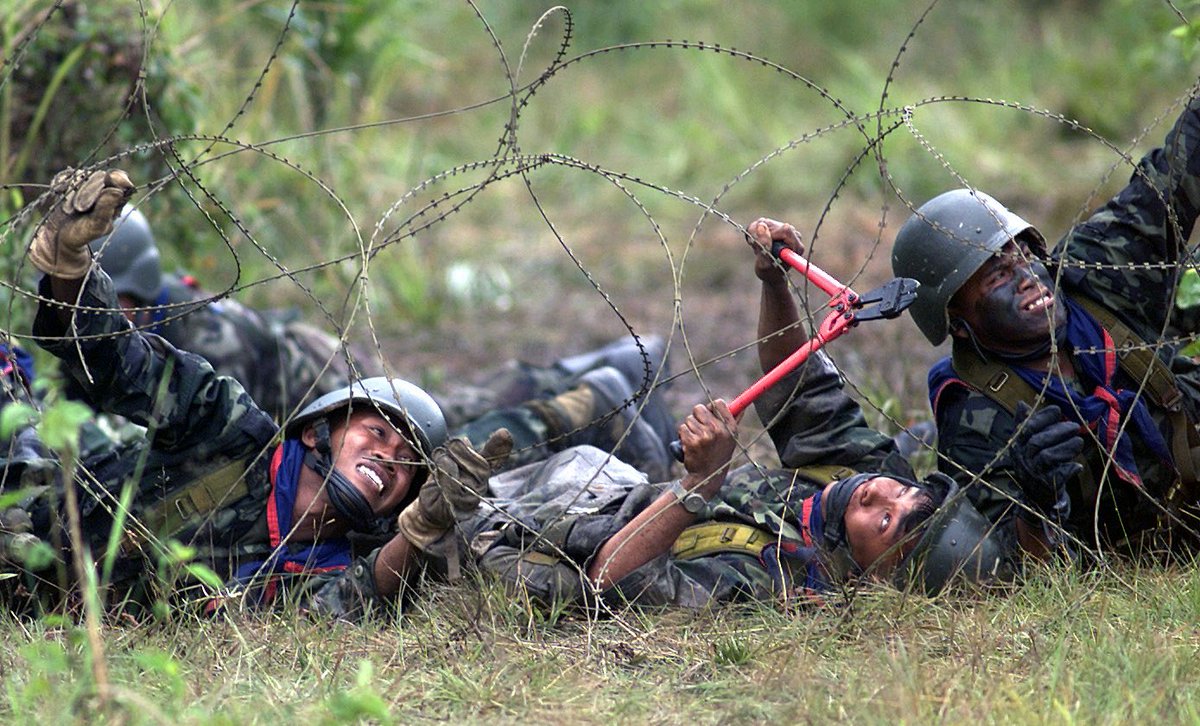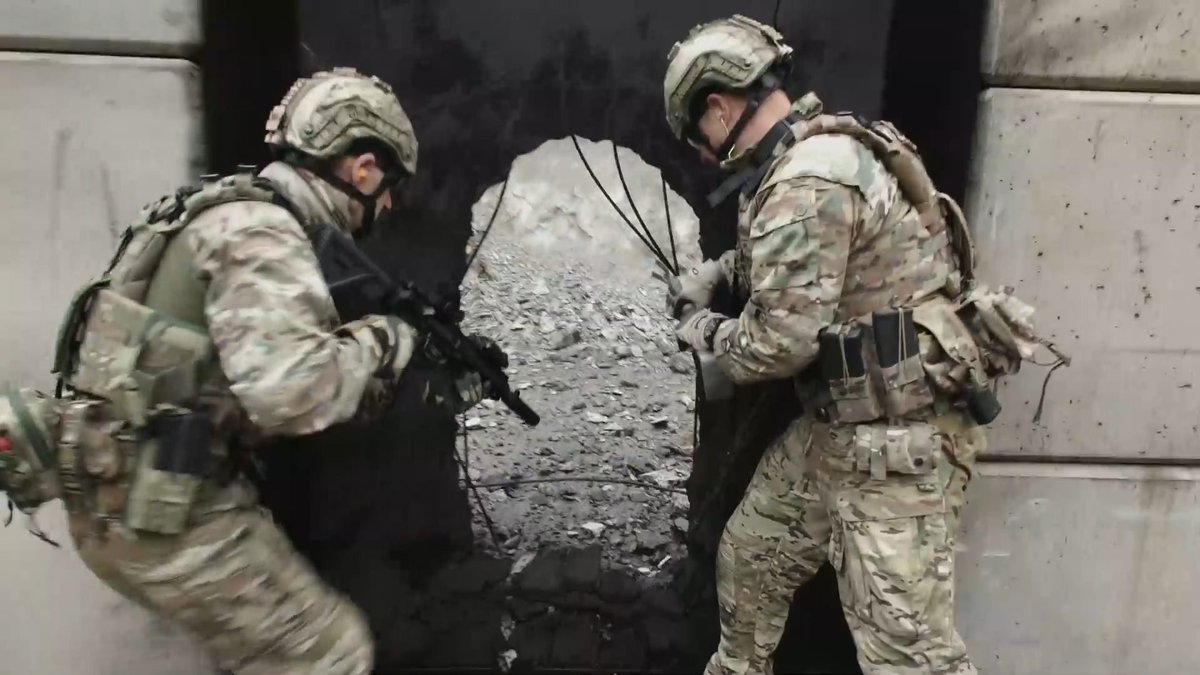The air in MN right now is the equivalent of smoking a pack of cigarettes an hour thanks to Canadian wildfires.
But for less than $100, I can breathe much easier. 🧵
Here’s how a DIY Corsi-Rosenthal box can clean your air and protect your lungs.
But for less than $100, I can breathe much easier. 🧵
Here’s how a DIY Corsi-Rosenthal box can clean your air and protect your lungs.

First some background on why I researched and built this. Canada is burning and the AQI in Minnesota is atrocious and will continue to be for a while. This is also becoming a yearly issue where Canada bursts into flame and pollutes the entire country. 

Today I woke up and could smell smoke and my throat hurt in spite of my home air filter on the HVAC system. I investigated my options and everything was expensive and overpromising. You realistically cannot expect 1000sqft of HEPA filtration from a device the size of a soda can. 

Rather than spending $350+ on multiple purifiers and getting locked into proprietary HEPA filter shapes I instead looked to the COVID era. Enter the Corsi-Rosenthal box. A simple device that anyone can buy and construct with household equipment. 

Studies have shown the boxes to reduce indoor wildfire smoke pollutant levels by at least 70%, they move large amounts of air (5 atm replacements an hour) and are suited for about 410sqft rooms. 

The construction of a box is very simple. You need the following (per box):
4 x MERV-13 or equivalent filter (I got HDX "premium allergen" they should be of the sizes 20x20x1, 20x25x1, 20x25x2, or 20x20x2.
1 20in box fan (I used Lasko brand)
Duct tape
Cutting tool
4 x MERV-13 or equivalent filter (I got HDX "premium allergen" they should be of the sizes 20x20x1, 20x25x1, 20x25x2, or 20x20x2.
1 20in box fan (I used Lasko brand)
Duct tape
Cutting tool

Begin by forming the "cube."
Join the filters (ensuring that the air flow will match the arrow shown on the box, have the arrow point inwards) and tape them with the duct tape. Be thorough as air follows the path of least resistance like water, leave no spaces.
Join the filters (ensuring that the air flow will match the arrow shown on the box, have the arrow point inwards) and tape them with the duct tape. Be thorough as air follows the path of least resistance like water, leave no spaces.

Next take the cardboard from your box fan and carefully open it up as shown. Take care to not damage the two large squares as they will both be used. 

Take your square and place it on the top of your box. This will become the bottom of the box when it's operating. Tape the square just as thoroughly as you did when joining the filters.
Tape all 4 sides.

Tape all 4 sides.


Flip the box over and take your fan, place the fan on top of the remaining hole and ensure it's pointed with the logo out as that way it draws air from inside the box and it flows outward.
Tape it to the box, be as thorough as you have been so far. Tape over any holes.

Tape it to the box, be as thorough as you have been so far. Tape over any holes.


Now take your last large cardboard square and draw a circle about 15 inches in diameter. Cut that circle out and affix it to the face of the fan and tape it as you have the others.
This is to increase efficiency and prevent backflow.

This is to increase efficiency and prevent backflow.


Congratulations you have built your boxe(s)! You should begin to notice an improvement in air quality in the next 30 to 60 minutes if the fan is ran on high.
In total this box cost me about $80 in materials and is providing more air filtration than anything else at that price.
In total this box cost me about $80 in materials and is providing more air filtration than anything else at that price.

Note: place the box in the center of the room and away from walls to maximize performance
Thanks for checking this thread out! I often write about prepping and topics relating to the interest of the prepared citizen. I appreciate it if you share this with others and give me a follow!
I also have 2 books I've written if you are interested!
amazon.com/s?i=stripbooks…
I also have 2 books I've written if you are interested!
amazon.com/s?i=stripbooks…

• • •
Missing some Tweet in this thread? You can try to
force a refresh






















